A tiny electrical device known as a pacemaker will be surgically inserted in your chest if you require one to be fitted. Your heart receives electrical pulses from the pacemaker to maintain a regular and healthy heartbeat. If you struggle with a sluggish heartbeat, getting a pacemaker can greatly enhance your quality of life. For certain people, the gadget may even save their lives.
One of the most popular heart surgery procedures is pacemaker implantation, with thousands of pacemakers installed annually. Most pacemaker recipients recover from their procedure in less than a day, and open cardiac surgery is not necessary.
| Country | Cost | Local_currency |
|---|---|---|
| United States | USD 20000 - 100000 | 20000 - 100000 |
| Singapore | USD 3000 - 15000 | 4020 - 20100 |
| Thailand | USD 6000 - 10000 | 213900 - 356500 |
| Greece | USD 22000 | 20240 |
| South Africa | USD 125000 | 2378750 |
Treatment cost

Types of Pacemaker Implantation Surgery in Sarvodaya Hospital and Research Centre and its associated cost
| Treatment Option | Approximate Cost Range (USD) | Approximate Cost Range (INR) |
|---|---|---|
| Pacemaker Implantation Surgery (Overall) | 4076 - 7581 | 336823 - 625433 |
| Single-Chamber Pacemaker Implantation | 4095 - 5570 | 336358 - 456762 |
| Dual-Chamber Pacemaker Implantation | 4576 - 6578 | 374751 - 542172 |
| Biventricular (Cardiac Resynchronization) Pacemaker Implantation | 6091 - 8146 | 497844 - 662770 |
| Leadless Pacemaker Implantation | 5584 - 7603 | 458422 - 624627 |
DOCTORS IN 14 SPECIALITIES
FACILITIES & AMENITIES
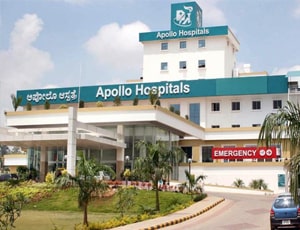
Types of Pacemaker Implantation Surgery in Apollo Hospitals Bannerghatta and its associated cost
| Treatment Option | Approximate Cost Range (USD) | Approximate Cost Range (INR) |
|---|---|---|
| Pacemaker Implantation Surgery (Overall) | 4537 - 8511 | 365946 - 705135 |
| Single-Chamber Pacemaker Implantation | 4556 - 6226 | 374534 - 509567 |
| Dual-Chamber Pacemaker Implantation | 5146 - 7360 | 413027 - 610944 |
| Biventricular (Cardiac Resynchronization) Pacemaker Implantation | 6716 - 8849 | 562356 - 725866 |
| Leadless Pacemaker Implantation | 6317 - 8398 | 502676 - 678950 |
DOCTORS IN 13 SPECIALITIES
FACILITIES & AMENITIES
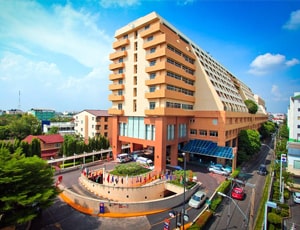
Types of Pacemaker Implantation Surgery in Vejthani Hospital and its associated cost
| Treatment Option | Approximate Cost Range (USD) | Approximate Cost Range (THB) |
|---|---|---|
| Pacemaker Implantation Surgery (Overall) | 16016 - 23515 | 582837 - 838661 |
| Single-Chamber Pacemaker Implantation | 16658 - 19300 | 578989 - 672975 |
| Dual-Chamber Pacemaker Implantation | 18081 - 21443 | 628327 - 772696 |
| Biventricular (Cardiac Resynchronization) Pacemaker Implantation | 20510 - 23207 | 706862 - 828001 |
| Leadless Pacemaker Implantation | 18045 - 21098 | 630721 - 762195 |

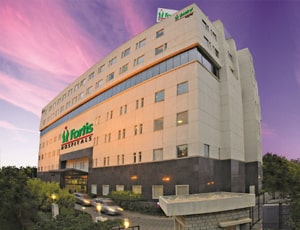
Types of Pacemaker Implantation Surgery in Fortis Hospital and its associated cost
| Treatment Option | Approximate Cost Range (USD) | Approximate Cost Range (INR) |
|---|---|---|
| Pacemaker Implantation Surgery (Overall) | 4073 - 7587 | 336425 - 625201 |
| Single-Chamber Pacemaker Implantation | 4074 - 5577 | 334044 - 456804 |
| Dual-Chamber Pacemaker Implantation | 4552 - 6628 | 374255 - 540723 |
| Biventricular (Cardiac Resynchronization) Pacemaker Implantation | 6077 - 8116 | 499604 - 666489 |
| Leadless Pacemaker Implantation | 5595 - 7612 | 457621 - 624675 |
DOCTORS IN 12 SPECIALITIES
FACILITIES & AMENITIES
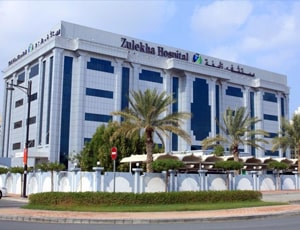
Types of Pacemaker Implantation Surgery in Zulekha Hospital Dubai and its associated cost
| Treatment Option | Approximate Cost Range (USD) | Approximate Cost Range (AED) |
|---|---|---|
| Pacemaker Implantation Surgery (Overall) | 6634 - 11283 | 25157 - 41792 |
| Single-Chamber Pacemaker Implantation | 6674 - 8969 | 24451 - 32320 |
| Dual-Chamber Pacemaker Implantation | 7751 - 10202 | 28504 - 36675 |
| Biventricular (Cardiac Resynchronization) Pacemaker Implantation | 9190 - 11346 | 32975 - 41863 |
| Leadless Pacemaker Implantation | 7813 - 10340 | 28906 - 36858 |
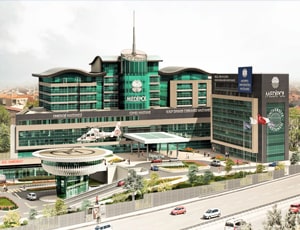
Types of Pacemaker Implantation Surgery in Medipol Mega University Hospital and its associated cost
| Treatment Option | Approximate Cost Range (USD) | Approximate Cost Range (TRY) |
|---|---|---|
| Pacemaker Implantation Surgery (Overall) | 10228 - 14771 | 309993 - 439472 |
| Single-Chamber Pacemaker Implantation | 10205 - 12161 | 307644 - 369228 |
| Dual-Chamber Pacemaker Implantation | 11024 - 14330 | 346506 - 439274 |
| Biventricular (Cardiac Resynchronization) Pacemaker Implantation | 13251 - 17000 | 402601 - 501083 |
| Leadless Pacemaker Implantation | 11219 - 14378 | 342348 - 441269 |

Types of Pacemaker Implantation Surgery in Zulekha Hospital Sharjah and its associated cost
| Treatment Option | Approximate Cost Range (USD) | Approximate Cost Range (AED) |
|---|---|---|
| Pacemaker Implantation Surgery (Overall) | 6757 - 11130 | 25202 - 41345 |
| Single-Chamber Pacemaker Implantation | 6756 - 9075 | 24335 - 32695 |
| Dual-Chamber Pacemaker Implantation | 7738 - 10014 | 29173 - 36895 |
| Biventricular (Cardiac Resynchronization) Pacemaker Implantation | 9005 - 11415 | 32610 - 41758 |
| Leadless Pacemaker Implantation | 7900 - 10332 | 29323 - 36477 |
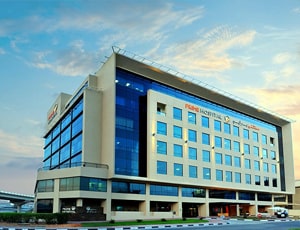
Types of Pacemaker Implantation Surgery in Prime Hospital and its associated cost
| Treatment Option | Approximate Cost Range (USD) | Approximate Cost Range (AED) |
|---|---|---|
| Pacemaker Implantation Surgery (Overall) | 6779 - 11330 | 24294 - 41618 |
| Single-Chamber Pacemaker Implantation | 6640 - 8966 | 24487 - 32986 |
| Dual-Chamber Pacemaker Implantation | 7835 - 10259 | 29041 - 36378 |
| Biventricular (Cardiac Resynchronization) Pacemaker Implantation | 9143 - 11017 | 33595 - 41257 |
| Leadless Pacemaker Implantation | 7738 - 10003 | 28446 - 37363 |
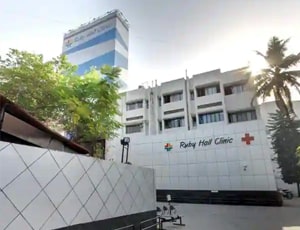
Types of Pacemaker Implantation Surgery in Ruby Hall Clinic and its associated cost
| Treatment Option | Approximate Cost Range (USD) | Approximate Cost Range (INR) |
|---|---|---|
| Pacemaker Implantation Surgery (Overall) | 3787 - 6984 | 308623 - 574172 |
| Single-Chamber Pacemaker Implantation | 3732 - 5064 | 308243 - 420924 |
| Dual-Chamber Pacemaker Implantation | 4187 - 6108 | 340863 - 505392 |
| Biventricular (Cardiac Resynchronization) Pacemaker Implantation | 5693 - 7492 | 452998 - 621577 |
| Leadless Pacemaker Implantation | 5119 - 6964 | 416562 - 566669 |
DOCTORS IN 13 SPECIALITIES
FACILITIES & AMENITIES
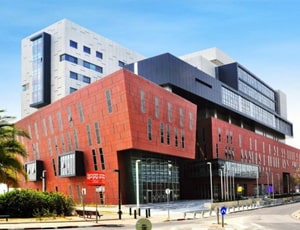
Assuta Hospital located in Tel-Aviv, Israel is accredited by JCI. Also listed below are some of the most prominent infrastructural details:
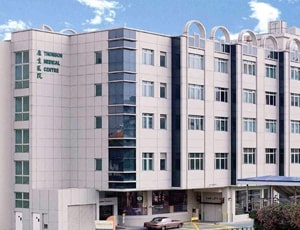
Apart from in-detail treatment procedures available, Thomson Medical Centre located in Thomson Road, Singapore has a wide variety of facilities available for International Patients. Some of the facilities which are provided by them are Accommodation, Airport Transfer, Choice of Meals, Interpreter, SIM, TV inside room. Also listed below are some of the most prominent infrastructural details:
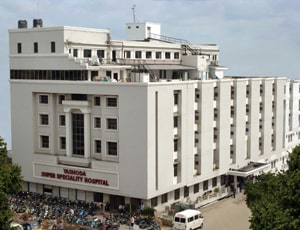
Types of Pacemaker Implantation Surgery in Yashoda Hospital, Malakpet and its associated cost
| Treatment Option | Approximate Cost Range (USD) | Approximate Cost Range (INR) |
|---|---|---|
| Pacemaker Implantation Surgery (Overall) | 4103 - 7615 | 334046 - 626548 |
| Single-Chamber Pacemaker Implantation | 4110 - 5596 | 334934 - 460013 |
| Dual-Chamber Pacemaker Implantation | 4569 - 6621 | 375061 - 541220 |
| Biventricular (Cardiac Resynchronization) Pacemaker Implantation | 6072 - 8140 | 500959 - 668288 |
| Leadless Pacemaker Implantation | 5585 - 7584 | 458614 - 625699 |
DOCTORS IN 10 SPECIALITIES
FACILITIES & AMENITIES
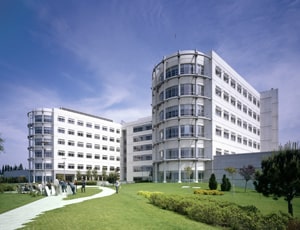
Types of Pacemaker Implantation Surgery in Anadolu Medical Center and its associated cost
| Treatment Option | Approximate Cost Range (USD) | Approximate Cost Range (TRY) |
|---|---|---|
| Pacemaker Implantation Surgery (Overall) | 10344 - 14459 | 300298 - 440281 |
| Single-Chamber Pacemaker Implantation | 10103 - 12173 | 303542 - 368506 |
| Dual-Chamber Pacemaker Implantation | 11238 - 14871 | 345079 - 448195 |
| Biventricular (Cardiac Resynchronization) Pacemaker Implantation | 13556 - 16980 | 413686 - 519289 |
| Leadless Pacemaker Implantation | 11223 - 14520 | 337887 - 445488 |
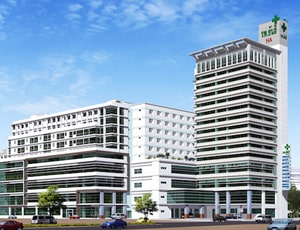
Types of Pacemaker Implantation Surgery in Yanhee International Hospital and its associated cost
| Treatment Option | Approximate Cost Range (USD) | Approximate Cost Range (THB) |
|---|---|---|
| Pacemaker Implantation Surgery (Overall) | 15962 - 23937 | 573489 - 835101 |
| Single-Chamber Pacemaker Implantation | 16500 - 19004 | 593226 - 673617 |
| Dual-Chamber Pacemaker Implantation | 17890 - 21077 | 633239 - 761326 |
| Biventricular (Cardiac Resynchronization) Pacemaker Implantation | 19838 - 23324 | 720587 - 845734 |
| Leadless Pacemaker Implantation | 18355 - 21399 | 641087 - 745683 |
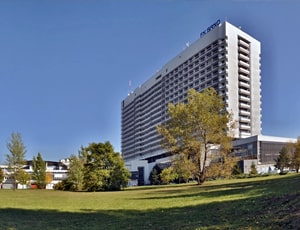
Apart from in-detail treatment procedures available, Czech Medical Center located in Brno, Czechia has a wide variety of facilities available for International Patients. Some of the facilities which are provided by them are Accommodation, Airport Transfer, Choice of Meals, Interpreter, SIM, TV inside room. Also listed below are some of the most prominent infrastructural details:
A pacemaker is a tiny, battery-operated device that ensures your heart beats at the right speed. Surgery is required to implant the pacemaker, usually beneath the skin near your collarbone. It's also known as a cardiac pacing device.
A pacemaker implant is a small device that weighs around 20 g to 50 g and is the size of a matchbox. It has a pulse generator with a battery, a tiny computer circuit, and a few wires called pacing leads. This system is attached to the heart and it emits signals through the wires. The pacing rate or the rate of electrical impulses can be adjusted as per the requirement of the body and be accordingly programmed. It can sense if a heartbeat is missed or if the heart is beating too slowly. Accordingly, it starts sending a steady signal to normalize the beating of the heart. If the beats are normal, then it simply does not send any signal.
Usually, a patient is kept under observation for more than a day after the pacemaker implantation surgery. It takes around six weeks for the patient to get used to the implanted device. Heavy work must be avoided initially. One should ensure that the concerned arm is not rendered immobile during this time to prevent a frozen shoulder. A physiotherapist can exactly show the movements that you need to perform to keep your arm healthy. Carry the duly filled pacemaker implant card for emergencies to avoid any unwanted situation.
Ask your healthcare adviser for the best multiple options and choose the one that meets your expectations